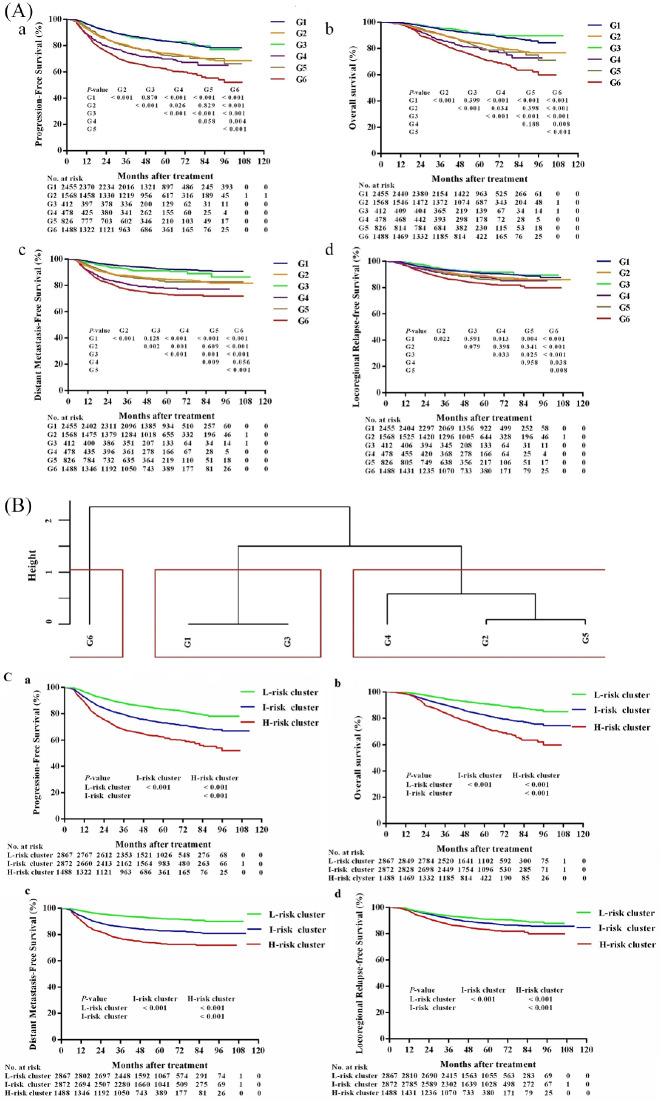Figure 2.
(A) Kaplan–Meier plots of survival outcomes for patients with locoregionally advanced nasopharyngeal carcinoma in six subgroups stratified by locoregional extension patterns combined with pre-treatment cf EBV DNA load. a PFS; b OS; cDMFS; d LRFS. G1 (group 1): The ascending type NPC (T3–4N0–1) with low cf EBV DNA load (<4000 copies/ml); G2 (group 2): The ascending type NPC with high cf EBV DNA load (⩾4000 copies/ml); G3 (group 3): The descending type NPC (T1) 2N2–3)with low cf EBV DNA load; G4 (group 4): The descending type NPC with high cf EBV DNA load; G5 (group 5): The mixed type NPC (T3–4N2–3) with low cf EBV DNA load; G6 (group 6): The mixed type NPC with high cf EBV DNA load. (B) G1–G6 were clustered into three risk clusters using a supervised clustering approach. Clustering analysis was performed according to the inter-group HRPFS to reduce the number of groups. We finally identified three distinct risk clusters: G1 and G3 were assigned into risk cluster 1 (low-risk cluster); G2, G4, and G5 were assigned into risk cluster 2 (intermediate-risk cluster); and G6 was assigned into risk cluster 3 (high-risk cluster). (C) Kaplan–Meier plots of survival outcomes for patients with locoregionally advanced nasopharyngeal carcinoma in three distinct risk clusters. a PFS; b OS; c DMFS; d LRFS.
DMFS, distant metastasis-free survival; H-risk, high-risk; HR, hazard ratio; I-risk, intermediate-risk; L-risk, low-risk; LRFS, locoregional relapse-free survival; OS, overall survival; PFS, progression-free survival

